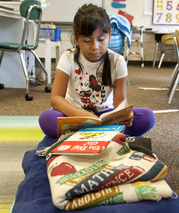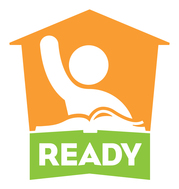
Revised English
Language Arts Standards Approved; Classroom Implementation in 2018-19
English language arts (ELA) teachers and students will use
newly revised standards in North Carolina public school classrooms beginning in
the 2018-19 school year. The State Board of Education approved the revised
standards at its April meeting following two months of review. The revisions
were endorsed by the following state-level groups: NC Chamber, BEST NC, the NC
Association of School Administrators, the NC School Boards Association, the NC
Large District Consortium and HIRE Standards. Also, Mission: Readiness, an
organization of more than 650 retired admirals and generals endorsed the
revisions.
Revisions were a compilation of work completed by a Data
Review Committee that reviewed information provided through ELA teacher focus
groups, educator and community surveys and the work of the Academic Standards
Review Commission. Writing teams of ELA teachers, district leaders and
professors from North Carolina colleges and universities used the Data Review
Committee’s recommendations to create three different drafts, each responsive
to follow-up feedback. This work has taken approximately a full year to
complete.
Key improvements to the standards include a new format, a
strong emphasis on the writing process, language continuums and more attention
to Reading Standard 10. Here’s how the change breaks down: 125 standards had
major changes; 45 standards had a minor change; 179 standards remained the
same; eight standards were removed; one new standard was included; 67 standards
had examples removed with no other change; and 38 standards were integrated
into others.
Over the next six months, the Department's English language arts staff
will develop an Implementation Kit to be available in January 2018 to provide:
• standards in the
new format;
• five lessons per
grade level;
• a text selection
guide;
• revised “40 Ways to
Read like a Detective” cards;
• an Independent
Sustained Reading Guide;
• Language Continuum
Guides;
• parent resources;
and
• an Integrating
Standards and Aligning ELA Instruction Module.
Training will be held this fall to introduce the new
standards and their format.
|

Annual Indian
Education Report Highlights Challenges, Successes
North Carolina is home to eight Indian tribes, mostly
clustered in 16 counties in eastern North Carolina with the exception of the
Eastern Band of the Cherokee located in far western North Carolina.
Students identified within these eight tribal groups are
served through federal Title VI supplemental funds as well as through the
regular funding provided by the State of North Carolina. While American Indian
students continue to post small improvements in the percentage of students
reading and doing mathematics at or above grade level, performance disparities continue
among racial groups.
The annual report to the State Board of Education from the
State Advisory Council on Indian Education, Shining
a Light on the Seventh Generation: The State of Education of American Indian
Students in NC, provided disaggregated student performance data for each
school district receiving the Title VI funds and recommendations for
improvement. Recommendations include:
- requiring low-performing districts and schools
that enroll American Indian students to create goals and activities that
specifically address increasing their achievement as a part of state-required
school improvement plans;
- ensuring that all NC Department of Public
Instruction staff who support districts and schools with American Indian
populations have awareness of American Indian tribes in North Carolina
including their history and culture and of instructional resources to support
assistance to American Indian students;
- widely disseminating the annual SACIE report;
and
-
ensuring that North Carolina’s Consolidated Plan
under the federal Every Student Succeeds
Act considers the academic and non-academic needs of American Indian students.
|
School-Based Mental
Health Policy Approved
After several months of discussion, the State Board of
Education approved a new School-Based Mental Health Initiative policy to help
address mental health concerns in local schools and districts. The new policy
was developed after a report and recommendations were presented to the Board by
the NC School Mental Health Initiative, a multi-disciplinary interagency
partnership with broad representation from education, mental health service
providers, lawyers, advocates, university faculty and parents.
The new policy focuses on universal prevention of mental
health concerns; early intervention; processes for referral, treatment and
re-entry; and stakeholder engagement. Policies and activities to promote a
socially and emotionally healthy school environment for all students and staff,
as well as improved access and connections to community-based services for
students and their families, are key components of this new policy.
To begin implementing this policy, school districts in
2017-18 will develop a plan for assessing and improving the effectiveness of
existing supports for mental health and substance use supports for students.
This could include staff training. In the 2018-19 school year, the districts’
plan implementation and three-year review cycle begins, and the NC Department
of Public Instruction will provide school mental health training and technical
assistance to districts.

NC Check-Ins
Assessment Model Receives High Marks from Local Educators
For the past two school years, elementary and middle schools in North
Carolina have been studying NC Check-ins, a new approach to assess student
learning in mathematics and English language arts. In 2016-17, 165 schools were
selected to use the Mathematics Check-Ins and 110 used the English language
arts version. There also were an additional 156 schools volunteering to use the
math Check-Ins and 76 volunteered to use the English language arts Check-Ins.
This new approach provides four shorter assessments spread
across the school year rather than one larger assessment given only at the end
of the year. By taking this approach, teachers receive consistent feedback on
student progress across the year so they can make adjustments that may be
helpful to student learning.
In a survey of school district staff, slightly more than 68
percent of respondents said that participation in NC Check-Ins should be a
local option (not state required). Slightly fewer than 63 percent of
respondents said that the Check-Ins should be available for online
administration. More than 70 percent of participating schools said that their
district did not use other benchmark testing alongside the NC Check-ins, but
nearly 30 percent did both.
Ryan McCreary, principal at Jenkins Elementary School in
Hickory, told the State Board of Education that the NC Check-Ins helped ensure
appropriate pacing, provided support for proper rigor and format for assessment,
and provided access to disaggregated data to support decision-making. McCreary
praised NCDPI’s support materials in the model. He noted that the Check-Ins
provided a good opportunity to address equity for students and tools to close
achievement gaps.
NCDPI Accountability staff recommended that NC Check-Ins be
expanded in school years 2017-18 (add grades 5 and 7 in English language arts
and grades 4 and 6 in mathematics) and in 2018-19 (add grades 4 and 8 in
English language arts and grades 3 and 7 in mathematics). Also, staff
recommended that the NC Check-Ins be available online and in paper-and-pencil
formats, and that schools be discouraged from administering additional
benchmark assessments alongside the NC Check-Ins to trim time spent on testing.
|

NCSU and UNC are
Collaborating on Innovative Lateral Entry Teacher Preparation
North Carolina State University’s and at the University of
North Carolina at Chapel Hill’s colleges of education have been working
together to address teacher effectiveness and attrition by providing lateral
entry teachers with a high-quality, research-based, online competency-based
preparation program. This new model of collaboration and outreach is intended
to serve some of the approximately 4,300 lateral entry teachers across the
state.
Last year, 850 lateral entry teachers were located in the
NCSU/UNC service area surrounding the Triangle area. This opportunity will
become available for about 50 lateral entry teachers beginning in the 2018-19
academic year and is anticipated to be comparably priced with NCSU’s current
lateral entry program, which costs approximately $4,200 per teacher.
Once it is
operational, the universities will evaluate the program based on a variety of
measures including teacher retention, teacher effectiveness, time to
completion, edTPA results, and the satisfaction of participating lateral entry
teachers.
|
|